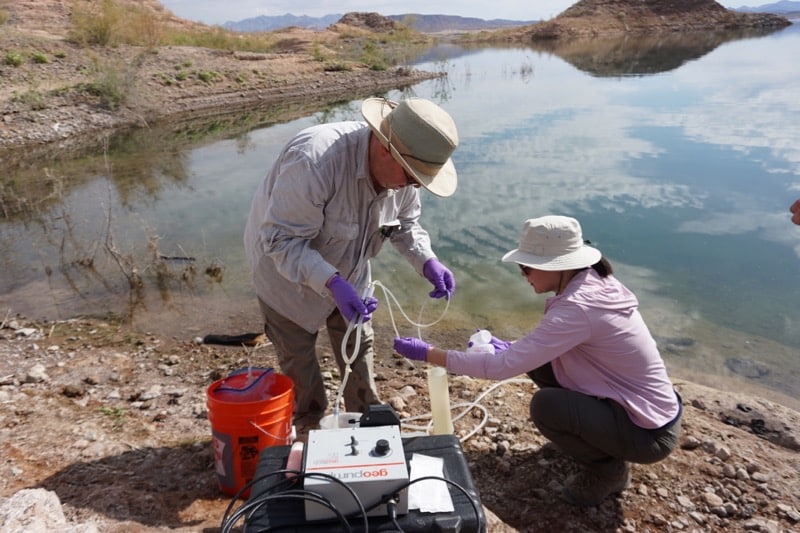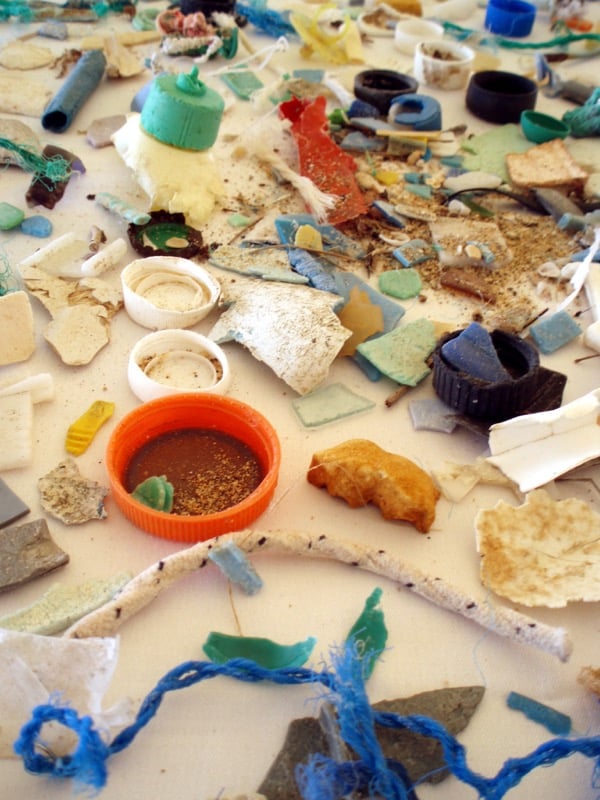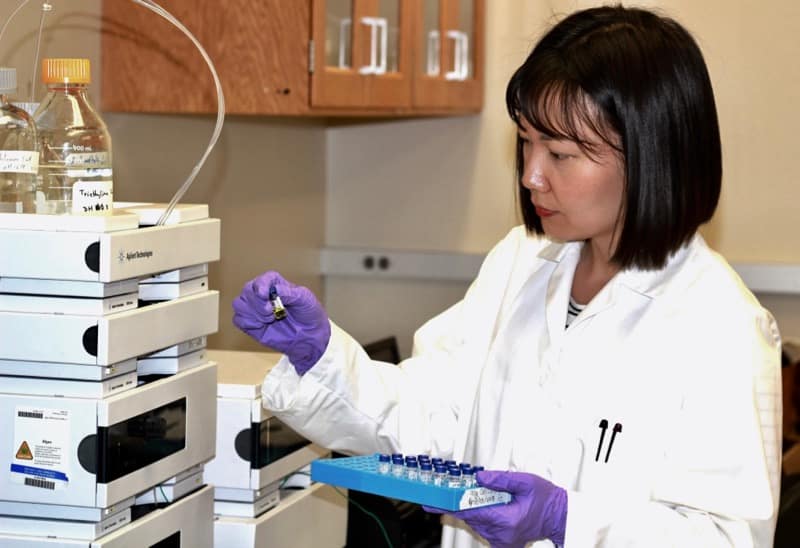Photo: Duane Moser (left) and Xuelian Bai (right) collect filters from the sampling pump to take back to the lab for analysis. Research on antibiotic resistance genes at DRI Antibiotic resistance—the ability of bacteria to survive in the presence of antibiotics—is an...
Problem Plastic: Investigating Microplastic Pollution in Nevada’s Waterways
The extent of microplastic pollution is only just beginning to be understood, with researchers discovering the tiny plastic pieces everywhere from the air we breathe to the deep ocean.
DRI researchers successfully remove harmful hormones from Las Vegas wastewater using green algae
Xuelian Bai, Ph.D., Assistant Research Professor of Environmental Sciences, works with an algae sample in the Environmental Engineering Laboratory at the Desert Research Institute in Las Vegas. Credit: Sachiko Sueki. LAS VEGAS, Nev. (April 8, 2019) – A common...


